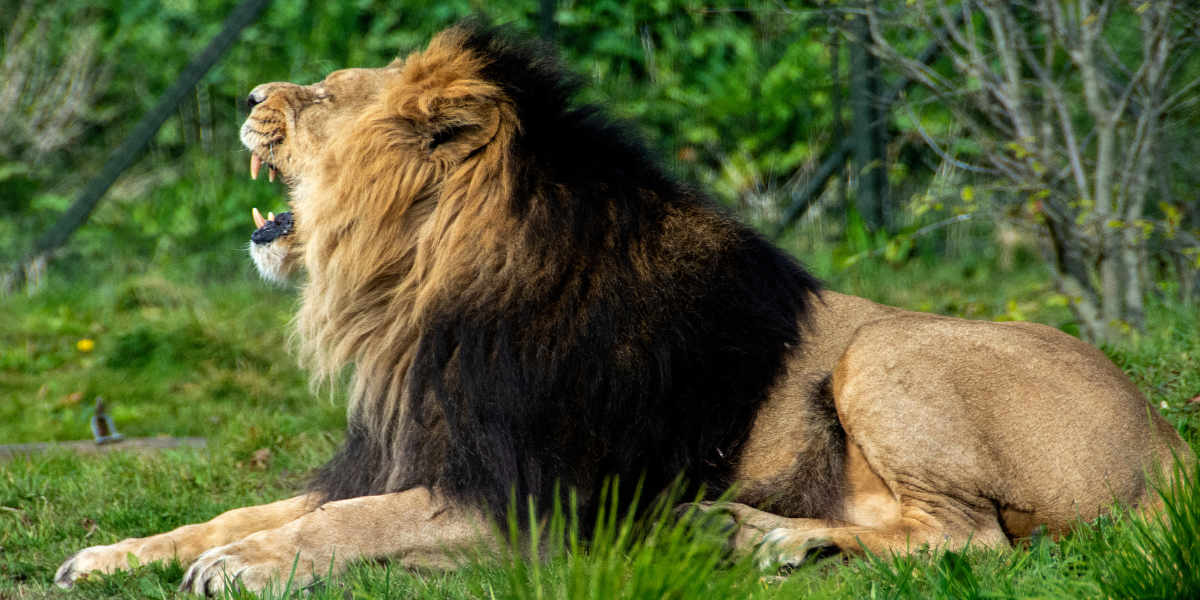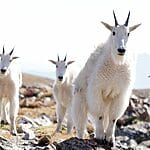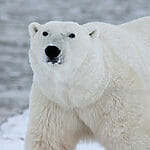Exploring 10 Interesting Animals in Ethiopia : Wild Encounters – Baboons to Simien Wolf
Get ready on a safari journey as we take you through the terrains of this East Africa to uncover the life of interesting animals in Ethiopia that call it home!

From the World’s rarest wolf – Ethiopian wolf to the Bleeding Heart Monkey known as Gelada baboon, Ethiopia is home to hundreds of interesting exotic animals. Breeding within its diverse landscapes, from tropical forests to arid plains. Here, nature is present in vibrant hues, and hundreds of interesting animals in Ethiopia live in different shapes, sizes, and behaviors that will leave you spellbound.
Gelada baboon
Gelada baboon is not actually true baboon, although they look very similar and are easily recognizable by the patches of hairless skin on their chest, which turns crimson when females are in oestrus. They are in fact, the last surviving species of a once widespread group of grass-grazing primates. Geladas live in large groups of as many as 600 members.
Fellow mountain wild animal enthusiasts join us in this blog, as we journey through Ethiopia’s wilderness to witness the interesting animals in Ethiopia firsthand!
National Parks to Watch Interesting Animals in Ethiopia
Tourists and wildlife animal enthusiast explore many wild and local animals in the African region of Ethiopia.
Critically endangered The black rhino, also known as the hook-lipped rhinoceros, is one of the most endangered animals in Africa. Also Somali Wild Ass Donkeys are everywhere in Ethiopia, used to carry crops and pull carts filled with people.
Simien Mountains National Park: Shelter for Endangered Species & Interesting Animals in Ethiopian Wildlife
The Simien Mountains National Park stands as a living proof to the unparalleled biodiversity of this ancient land. This remarkable park is a UNESCO World Heritage Site. It is a haven for a myriad of interesting animals in Ethiopia and shelters some of the world’s most endangered animals of amongst all Ethiopian animals.
The park’s ecosystem is a treasure trove for nature enthusiasts and wildlife researchers alike. Venturing through the park’s winding trails, you may encounter the rare Ethiopian endemic Mountain Nyala and the elegant Bale Monkey in their natural habitats.
Mountain Nyala

The mountain nyala is similar in size and shape to the greater kudu but it has smaller (though by no means insignificant) horns with only one twist as opposed to the greater kudu’s two or three. The shaggy coat of the mountain nyala is brownish rather than plain grey, and the striping is indistinct.
Did you know? Ethiopian wolf is one of Earth’s rarest canid species, and unfortunately Africa’s most endangered carnivore.
Check out this guide to the country’s unique wildlife. We take a look at some of the most unusual Ethiopian animals. Let’s learn more about What kind of animals live in Ethiopia?
Ethiopian Wolf

The Ethiopian Wolf’s domain lies in the Highlands of Ethiopia, which reach elevations of over 14,000 feet. At the center of this wilderness lives the Ethiopian wolf, the national animal of this country. Ethiopian Wolf is also as the “Simien fox.” Standing about 20 inches tall at the shoulder, this Wolf is a sight to behold. It roams around these highlands with its russet fur and pointed ears.
The Wolf primarily dines on rodents, especially the endemic giant mole rat. Despite their resilience, these rare Wolves face numerous threats. Estimates suggest that there are fewer than 500 Wolves remaining in the wild, making them one of the most endangered carnivores in the world.
Gelada Baboons: Beyond the Babble

Descending from the Simien Mountains, the Gelada baboons are exclusively found in the highlands of Ethiopia and Eritrea known for their social prowess and impressive fur.
Gelada baboons, scientifically known as Theropithecus gelada, are intriguing creatures with unique characteristics. These “Bleeding-heart” Baboons have a Bloody Red patch on their chests that seems too real.
Did you know? Both genders exhibit a hairless patch on their chests outlined by white hairs, and this patch’s color and size change based on hormonal shifts.
Male gelada baboons are larger, weighing around 20.25 kg and measuring about 69 to 74 cm in length, with an additional tail length of 45 to 50 cm. Females are slightly smaller, with an average weight of 14.8 kg, body lengths of 50 to 65 cm, and tail lengths of 30 to 41 cm.
These baboons live in groups called “one male units” (OMUs), consisting of one male and several females with their offspring. As they move in large groups, the sounds of their chattering can be heard from a mile away!
Don’t let their entertaining antics fool you. They are herbivorous primates are an integral part of Ethiopia’s delicate ecosystem.
Walia Ibex: Scaling the Heights

The Walia Ibex, scientifically known as Capra walie, is a captivating and endangered species of ibex. Walia Ibex are exclusively found in the rugged mountains of northern Ethiopia, particularly in the Semien Mountains.
These ibex exhibit a striking appearance. They sport a chocolate-brown to chestnut-brown coat coloration, with greyish-brown muzzles and lighter grey tones in their eyes and legs.
Males bear exceptionally large horns, curving backward and reaching lengths of up to 110 cm (43 in). These horns play a significant role in dominance disputes among males. While foraging, they can travel up to 2 kilometers (1.2 miles) per day, sometimes standing on their hind legs to reach young shoots of giant heath.
As herbivores, Walia Ibex feed on a diverse diet including various grasses, leaves, herbs, and shrubs. Reproductive maturity is achieved at one year of age.
These magnificent creatures were once widespread in the Semien Mountains but faced a decline during the 20th century due to habitat loss and overhunting.
the Walia Ibex population in the Simien Mountains National Park is on the rise, with over 975 individuals or 585 mature individuals. Classified as Vulnerable on the IUCN Red List, the Walia Ibex’s numbers are gradually increasing
Ethiopian Highlands Hare

The Ethiopian Highlands Hare, scientifically known as Lepus fagani, possesses intriguing characteristics and behaviors that define its presence.
The Ethiopian Highland Hare is an endemic species inhabiting northern and western Ethiopia, extending to southeastern Sudan and northwestern Kenya. Found on the plateau region west of the Great Rift Valley, these hares thrive in elevations ranging from 500 to 2500 meters above sea level.
Medium-sized and distinctive, Ethiopian Highland Hares weigh between 1.7 to 2.3 kg, measuring 45 to 54 cm in length. Notable features include hind feet measuring 9 to 11 cm, ears spanning 6.0 to 9.5 cm, and tails extending from 7.0 to 10.7 cm.
Ethiopian Highland Hares are primarily nocturnal, but they may show activity at dusk and dawn on cloudy days. They are herbivores that primarily graze on short, fresh grasses, herbs, and leaves.
Abyssinian Cat

The Abyssinian cat, often referred to as the “Aby,” is an ancient and enigmatic breed that exudes athleticism and curiosity. With origins shrouded in mystery, it is one of the oldest known cat breeds.
Abyssinians are known for their striking coat with nuanced ticking, giving them a warm reddish-brown base with black ticking, and fawn is also a common colour. Their large, forward-facing ears sit atop a wedge-shaped head above almond-shaped eyes that exude alertness.
Nubian Vulture
The Nubian Vulture, scientifically known as Torgos tracheliotos. Nubian Vulture doesn’t possess a strong sense of smell.

This vulture is characterized by its impressive size, with a wingspan of 2.5 to 2.9 meters and a body length of 95 to 115 cm. It showcases a striking contrast between its blackish upper body and white thigh feathers. The Nubian Vulture primarily feeds on animal carcasses.
Black Lion

Ethiopia’s Black Lion is genetically distinct from all other Lions in Africa. It is one of the interesting animal species found in Bale mountain park. These lions have distinctive black mane after which they are named.
Yellow-Fronted Parrot

The Yellow-Fronted Parrot has a bright green body and a yellow head and can be spotted on the highlands near Lake Tana. It is one of the interesting animals found in Ethiopia. This bird species is marked as the “Least Concern” on the IUCN red list.
Bale Mountains National Park
Bale Mountain Vervet is another mysterious inhabitant of the Bale Mountains park, and one of Africa’s least studied primates.

Bale Mountain Vervet
The Bale Mountain Vervet is a small, white-chested monkey found in the bamboo forests of the Bale Mountains. These monkeys are listed as listed as “Endangered species” on the red list of IUCN.

Frequently Asked Questions
Despite the name, Ethiopian wolves are not closely related to the gray wolves. They are a unique species that has evolved in isolation in the highlands of Ethiopia.
What makes the Gelada baboons stand out from other primates?
The Gelada baboons are known for their distinctive “bleeding-heart” chest patch and their fascinating social behaviors. Unlike other baboons, they predominantly feed on grasses, making them a unique member of the primate family.
How has human activity impacted these animals?
Human activities, such as habitat destruction, encroachment, and climate change, have threatened the populations of these animals. Conservation efforts are crucial to ensure their survival for future generations.
What animal is unique to Ethiopia?
The Gelada, also known as the baboon-sized Gelada monkey, is unique to Ethiopia
Does Ethiopia have gorillas?
Yes, Ethiopia is home to the Gelada monkey, also known as the baboon-sized Gelada.
Are there big cats in Ethiopia?
Ethiopia is home to the Black-Maned Lion, making big cats a presence in the country.
What is the National Animal of Ethiopia?
The Lion is the national animal of Ethiopia
- 12 Interesting Animals in Dominican Republic - 2024-05-02
- 8 Common Dangerous Animals in Yosemite - 2024-05-01
- 11 Interesting Animals in the Midwest - 2024-05-01









